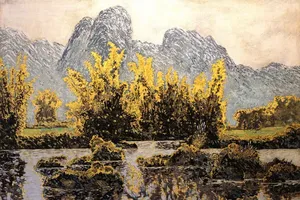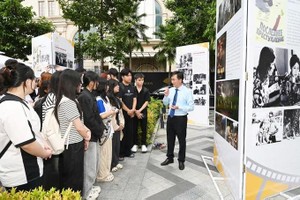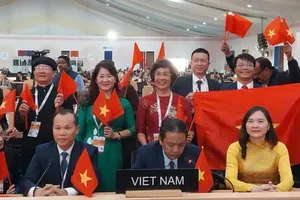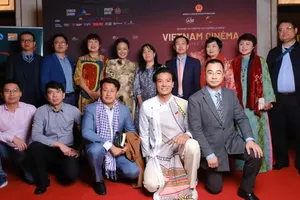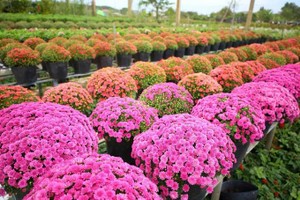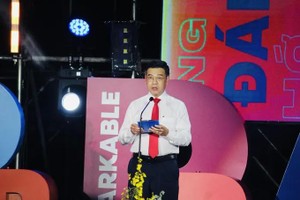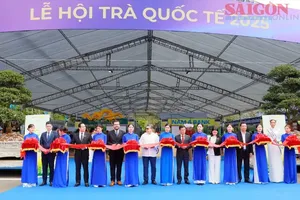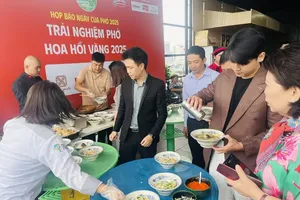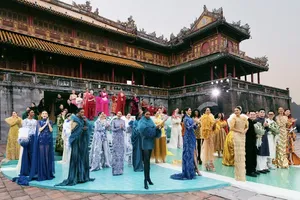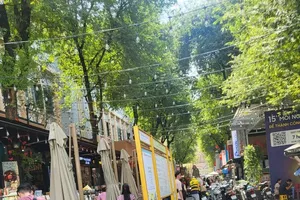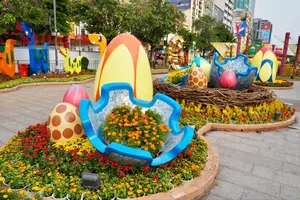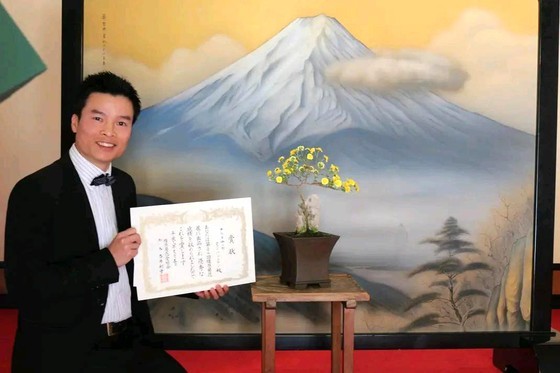 |
Nguyen Van Quang at a chrysanthemum bonsai exhibition in Japan |
Ten years have elapsed since the first chrysanthemum bonsai artwork was exhibited, and Nguyen Van Quang, a Vietnamese individual, stands as the sole foreigner who has persevered with this art form in Japan.
Shaping chrysanthemum bonsai is far from a rhythmic and orderly process as the cycle of "as the lotus withers, it is the chrysanthemum's turn to bloom." Until this day, chrysanthemum bonsai has largely remained a Japanese pursuit. To receive awards from the President of the Japanese Chrysanthemum Association and to be interviewed by Nara's Mainichi Newspaper, Nguyen Van Quang has previously faced numerous instances of disappointment.
"During my first two years of participating in the chrysanthemum bonsai exhibition, I encountered failure. My Japanese bonsai master pointed out that my mistake was an excessive devotion to the plant, with overzealous watering and care, which led to the roots not needing to extend to absorb nutrients. A plant cannot flourish with overly short roots. This experience is a valuable lesson in both the art of shaping the tree and being human."
In such exhibitions, what is truly captivating is observing the evolution of the artworks as each day of the exhibition unfolds. When the President of the Chrysanthemum Bonsai Association sent an invitation letter to the members for their participation, it was the time that Nguyen Van Quang's chrysanthemum plant, nurtured meticulously on the crowded shelves in the small garage in front of his house in Goseshi District of the ancient capital of Nara, was poised to bloom.
Cultivating woody bonsai demands patient nurturing from a young age, and it can often take a lifetime to witness the outcomes. At times, it requires multiple generations to cultivate a one-hundred-year-old bonsai tree. However, what fuels the Japanese passion for chrysanthemum bonsai? Quang explained that, with chrysanthemum bonsai, results can be witnessed within a single year. The beauty of the chrysanthemum bonsai exhibition is similar: the artworks gradually unfold, bursting with color and fragrance from October 20 to November 20 every year."
Nguyen Van Quang has been fond of bonsai since his time in Vietnam. He admired it for its beauty, but he had never delved into growing them on his own. In 2006, he relocated to Japan to work as a laborer, immersing himself in the homeland of this art form where his initial interest had the opportunity to take root and flourish.
"By chance, I attended a bonsai exhibition here and met my first Japanese master. He told me that if I liked it, he would teach me. Many lessons unfolded, with a focus on the concept of 'wabi-sabi,' which my master wished for me to deeply grasp. 'Wabi' represents perfection, while 'sabi' embodies imperfection. Even when observing a failed bonsai piece, my master always found something to commend. Every imperfection possesses its unique beauty; it is just that people have not noticed it yet," Quang said.
People are willing to spend thousands, even millions of dollars, to acquire a fully mature bonsai tree for immediate enjoyment. However, Quang derives satisfaction from the process of cultivating and shaping these trees. In his small garage, there are scarcely any expensive bonsai trees. When he and his family take strolls through the woods, venture up the mountains, or explore the local market, if they encounter an affordable and promising tree, Quang is quick to purchase it and bring it home for cultivation.
The joy and spiritual enrichment come from the watering, pruning, and repotting process. In his small garden, Quang tends to smaller plants, usually 20cm or less in size. Surprisingly, almost every year, Quang receives invitations to exhibit his creations, and he is held in high regard by local bonsai enthusiasts. Moreover, from a bonsai tree, a new layer of significance emerges. It is when Quang plans to introduce Vietnamese cultural values in harmony with a bonsai pot starting next year.
"The bonsai tree is planted in a Vietnamese ceramic pot and displayed on a wooden pedestal crafted by Vietnamese carpenters," he revealed.

